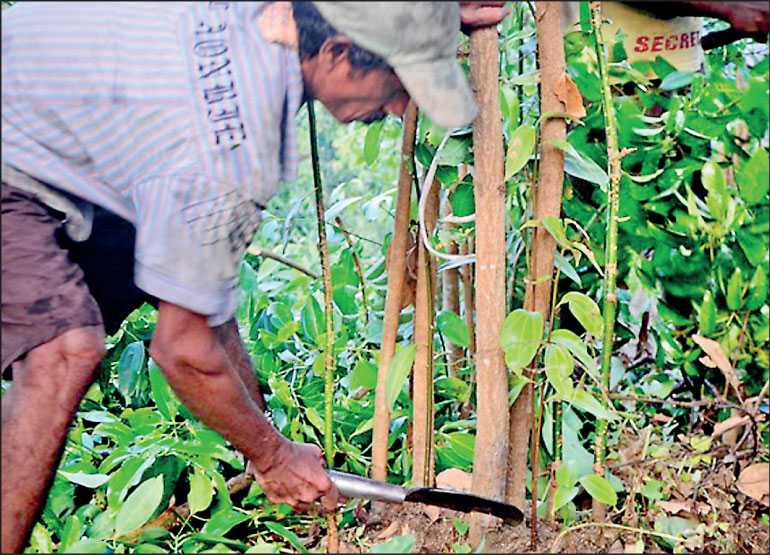Tuesday Nov 25, 2025
Tuesday Nov 25, 2025
Wednesday, 29 July 2020 02:03 - - {{hitsCtrl.values.hits}}

Cinnamon, harvested by cinnamon peelers, is a native spice to Sri Lanka.(Supplied: Dilhani Dissanayake)

Sri Lankan Ceylon cinnamon is considered the "true" cinnamon.(Supplied: Dilhani Dissanayake)
By Larissa Romensky and Jo Printz
ABC Central Victoria: Dilhani Dissanayake wants everyone to know a cinnamon peeler is actually a person and not a tool.
She has been so passionate about her own cultural history she completed her PhD thesis on the history of the cinnamon peelers in Sri Lanka.
|
Dr Dissanayake wrote her PhD on the history of cinnamon peelers.(Supplied: Dilhani Dissanayake)
|
Dr. Dissanayake says the popular spice is native to Sri Lanka and is part of the country’s cultural identity.
“It’s come to represent Sri Lankan culture and its people’s identity,” she said.
A person and not a tool
Dr. Dissanayake said cinnamon began being used in Sri Lanka as a traditional Ayurvedic medicine before it was used as a spice.
It has been harvested for centuries by peeling the inner bark of several trees of the same species and then processed as quills or powder. Dr. Dissanayake’s thesis explores this history with a particular emphasis on the often neglected figure of the cinnamon peeler.
“No-one talks about the hardships and the sacrifices the peelers made to get that product to market,” she said.
The peelers have been an intrinsic part of the labour-intensive processes for centuries with the skills often passed on between generations.
Dr. Dissanayake said on average it took about five to seven years to perfect the skill of peeling cinnamon.
“The peeling process is really intensive and relies on local knowledge, expert skills, dexterity and patience,” she said.
During Sri Lanka’s pre and colonial era, peelers were from the lowest Sinhalese Salagama caste.
When the country came under Dutch rule in the mid-1600s, after seizing control from the Portuguese, the Dutch took control of the prized spice by commercialising the industry through the creation of plantations and often brutalised workers.
Popular spice has lesser known history
Dr. Dissanayake said she was at a Bendigo-based event where local Indian people were speaking about their culinary culture when an Australian friend asked her whether cinnamon was a seed, fruit or flower. “I was shocked to hear my friend knew nothing about it, although it is tasted in many foods, like donuts, cereals and curries,” Dr. Dissanayake said. The experience inspired Dr. Dissanayake to pursue her PhD at La Trobe University in the history of the cinnamon peelers.
Dr. Dissanayake and her husband first came to Bendigo so she could study a Master of community planning and development seven years ago.
“I really didn’t know anything about Bendigo, we didn’t have any friends here, no relative, and here we were in this strange climate,” she said. “Now I know lots of people and I’m really glad we are here.
World’s largest exporter
Whereas Sri Lanka once monopolised the trade of cinnamon, it has become only the fourth largest producer globally, but has remained the world’s largest exporter of the popular spice. Cinnamon is now grown in many parts of Asia and other tropical climates, with Indonesia now the world’s largest cinnamon producer.
Dr. Dissanayake said there were two types of commercial cinnamon; Ceylon cinnamon, which was native to Sri Lanka, and the cheaper cassia cinnamon, primarily produced in Indonesia. Dr. Dissanayake said today workers continue to manually peel cinnamon, despite attempts by government to mechanise the process with machines.
(Source: https://www.abc.net.au/news/2020-07-25/neglected-sri-lankan-cinnamon-peelers-recognised/12468364)